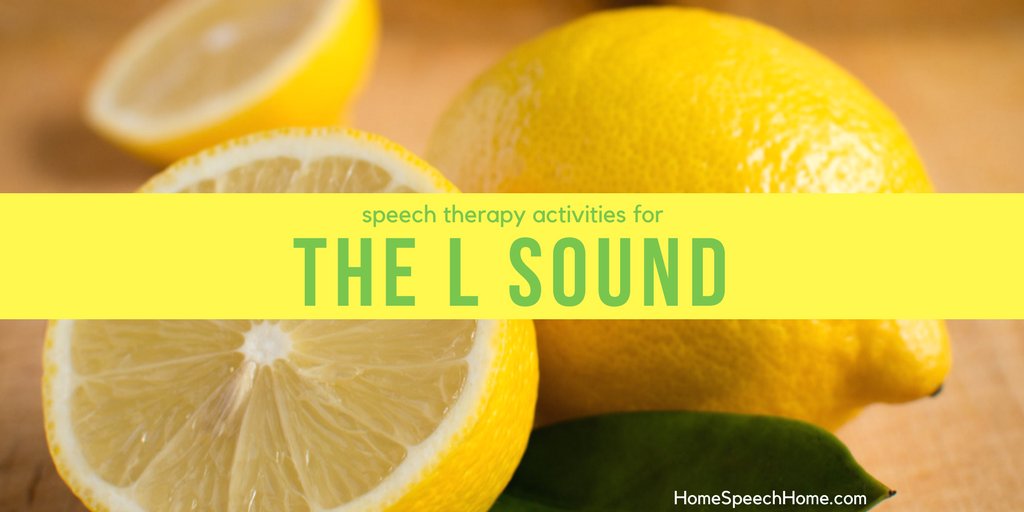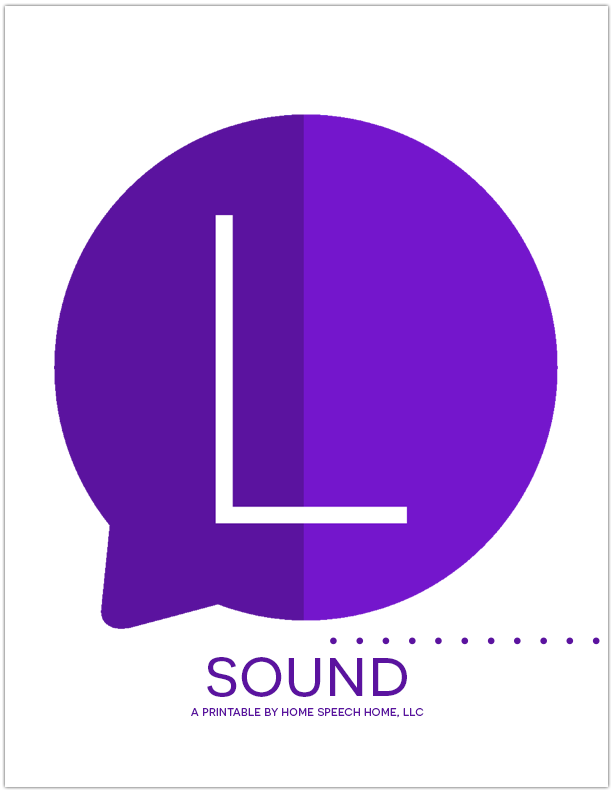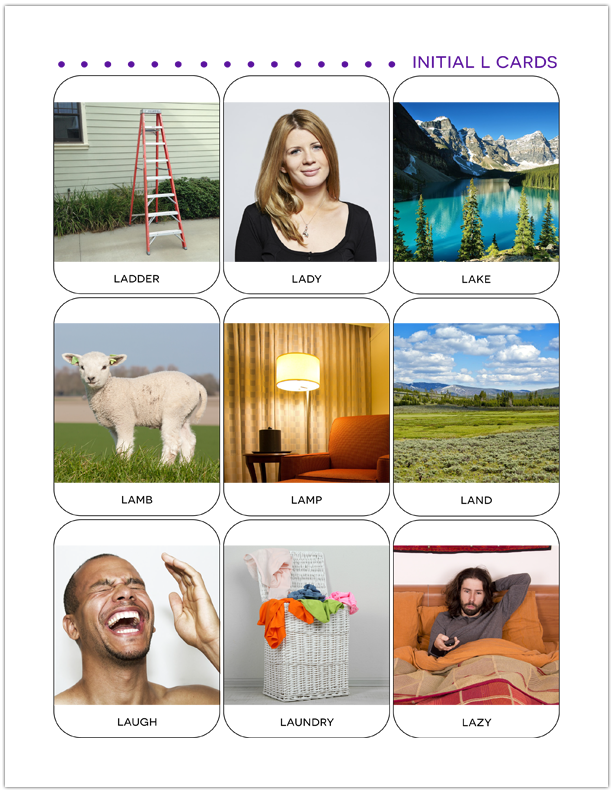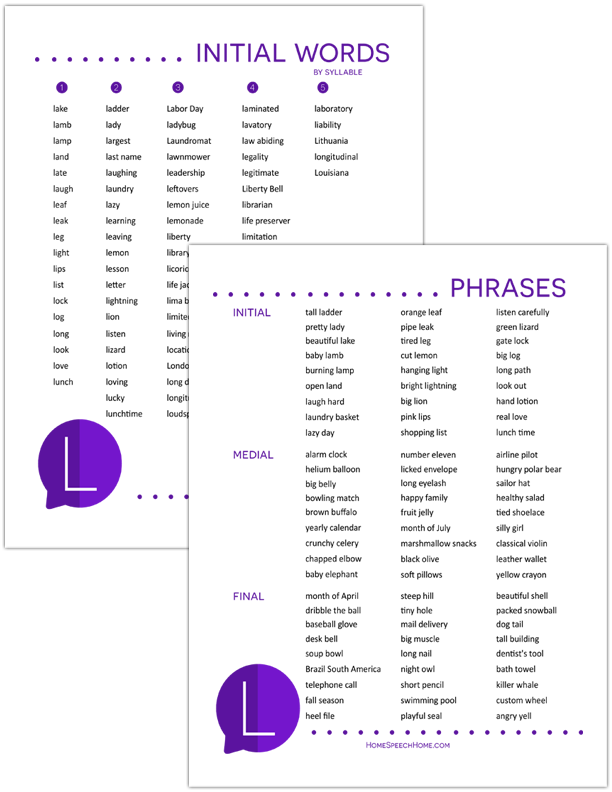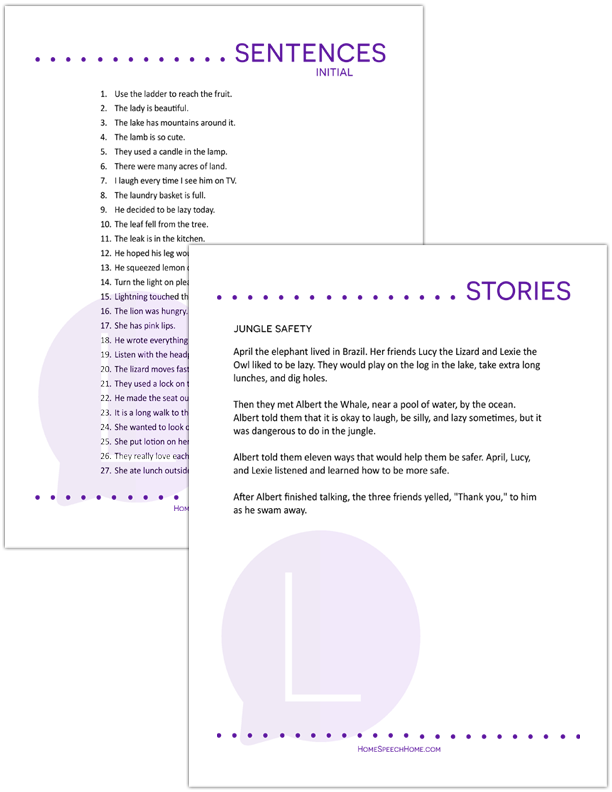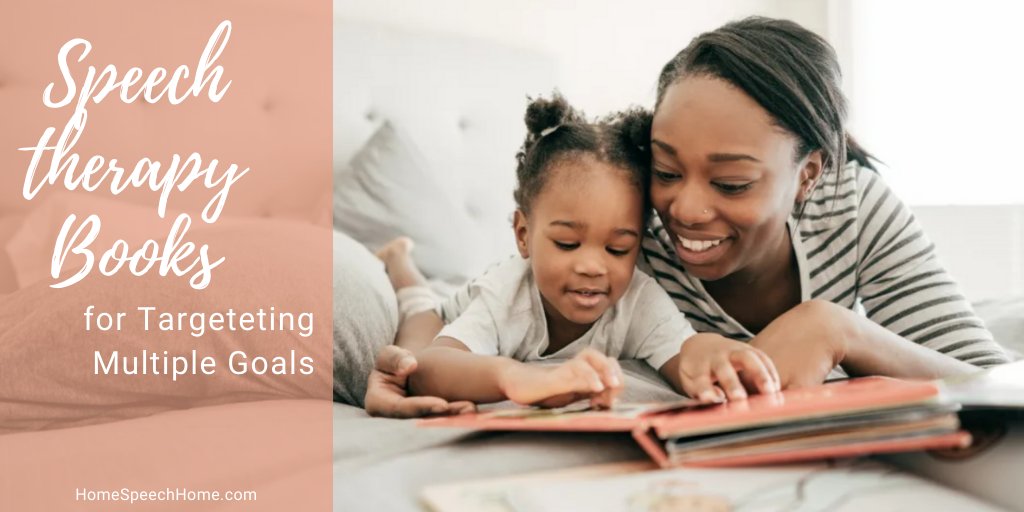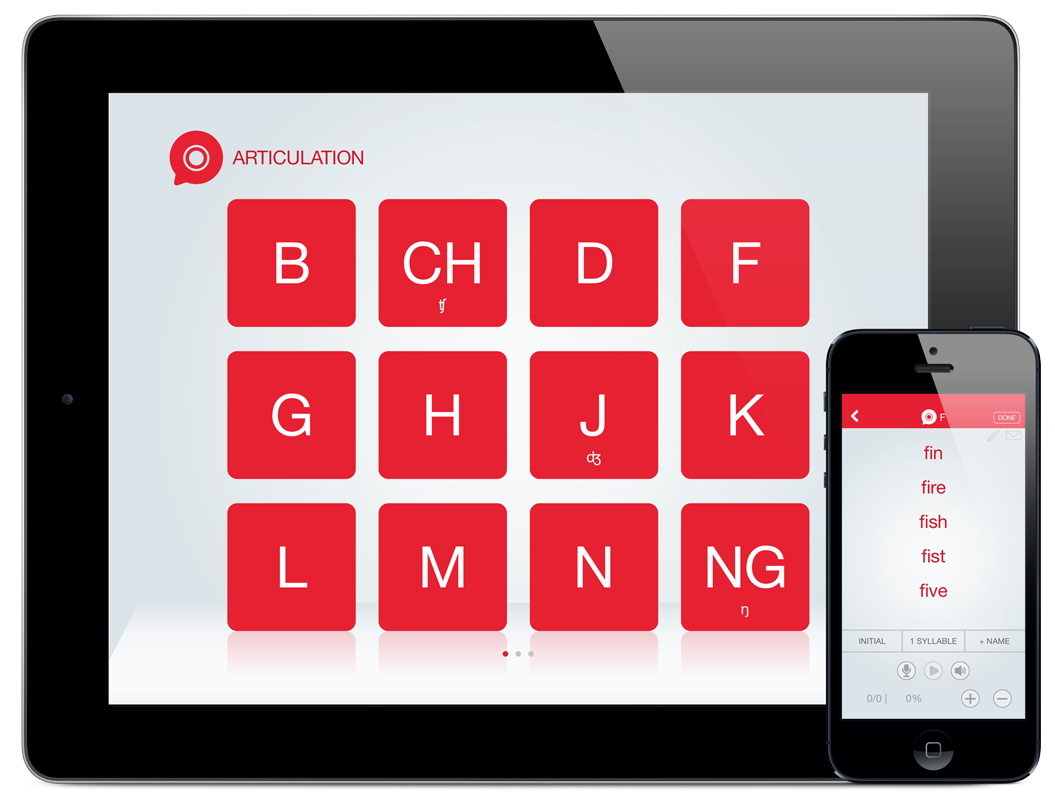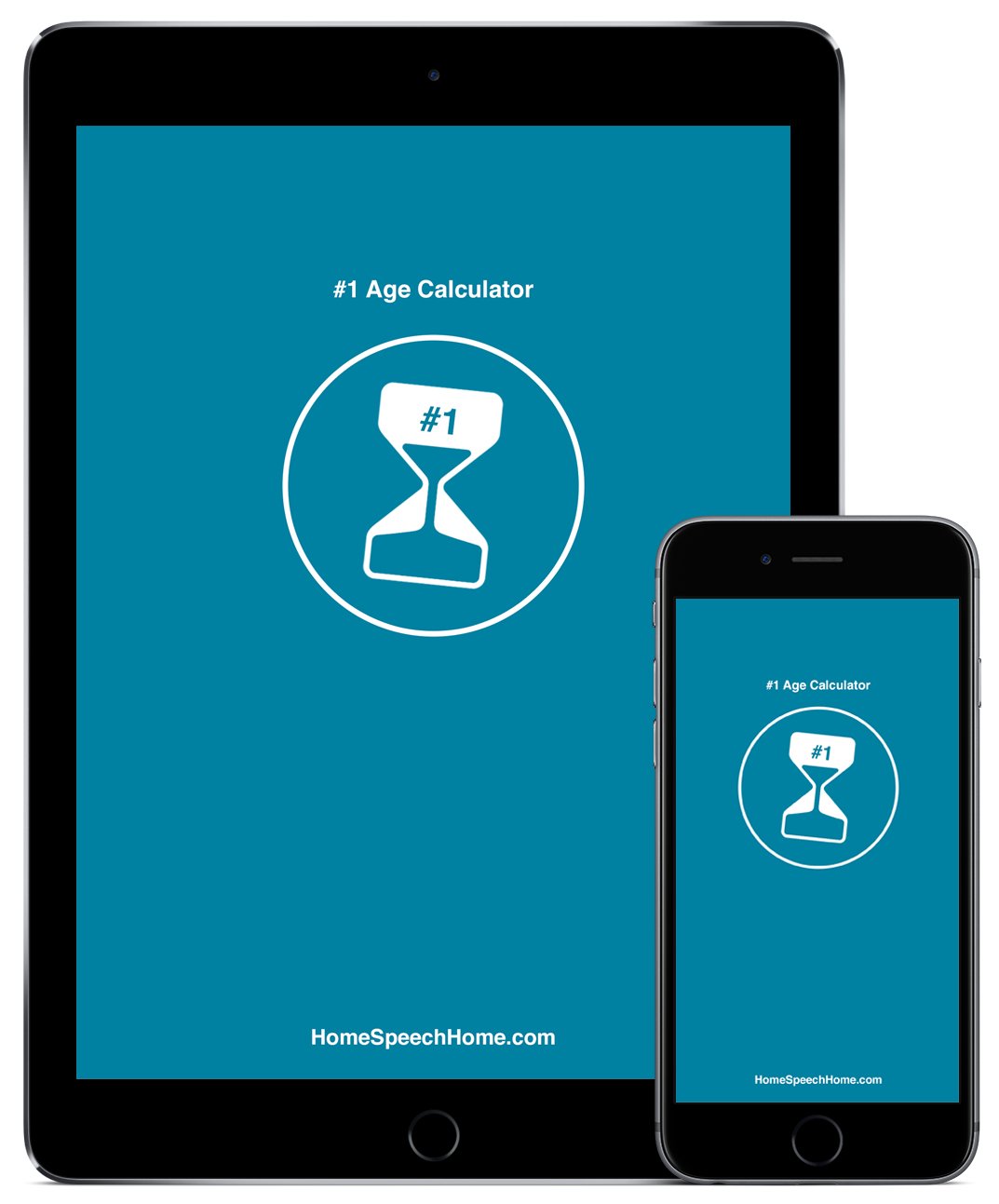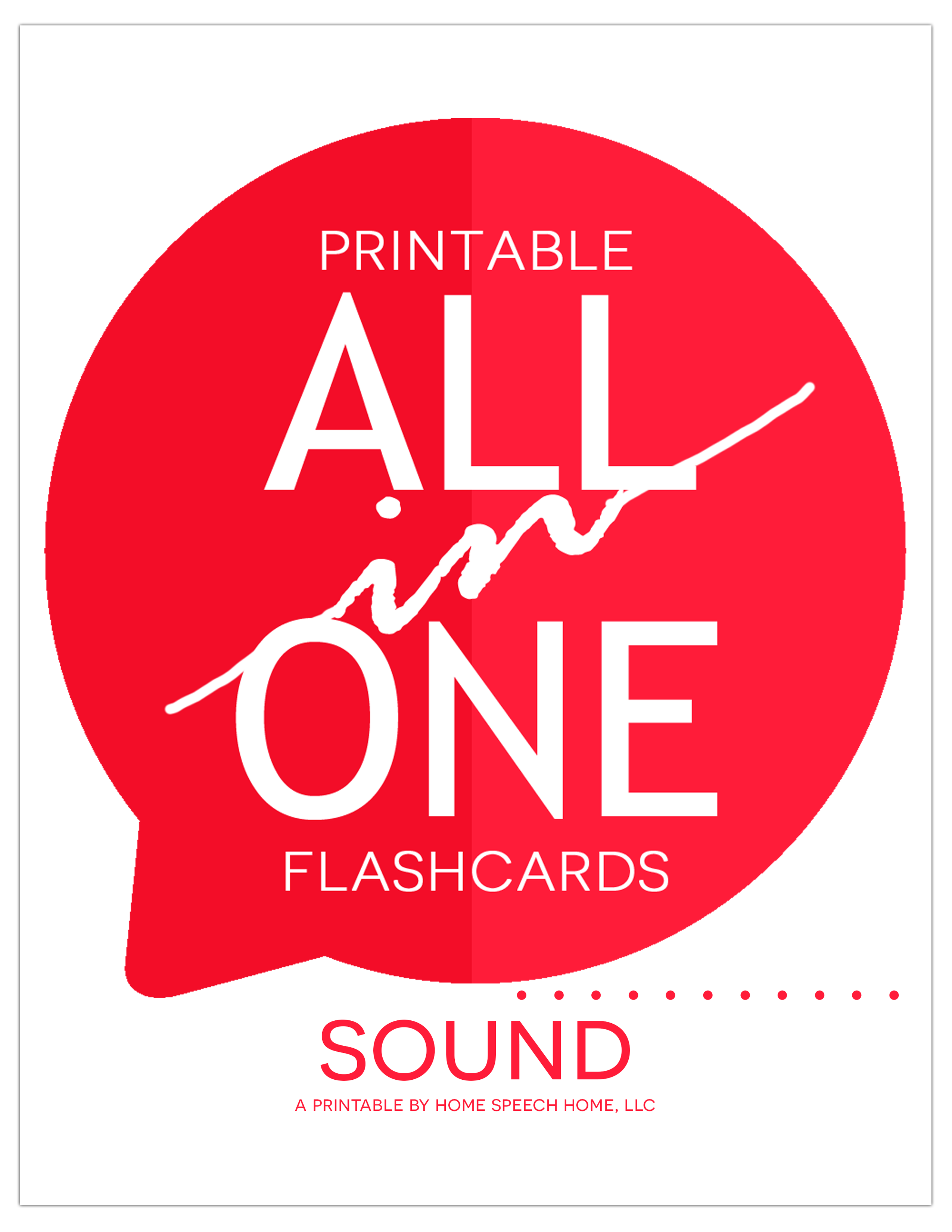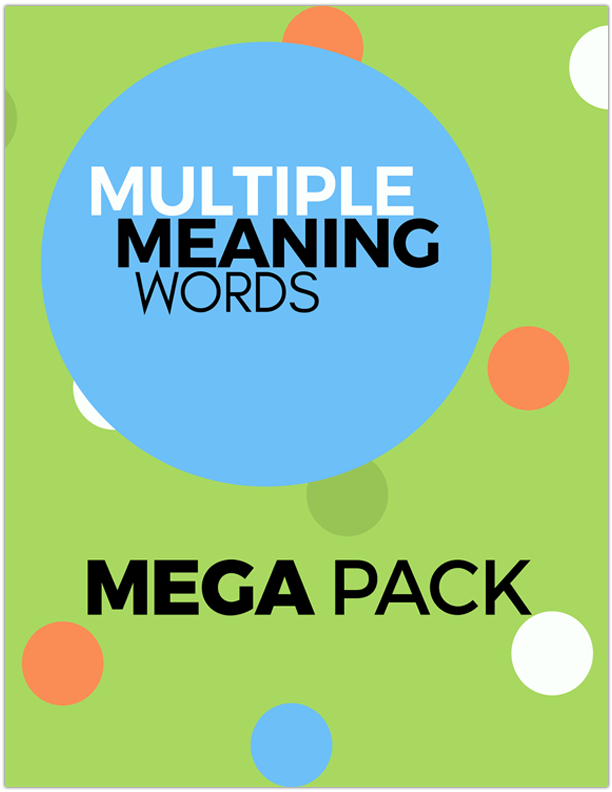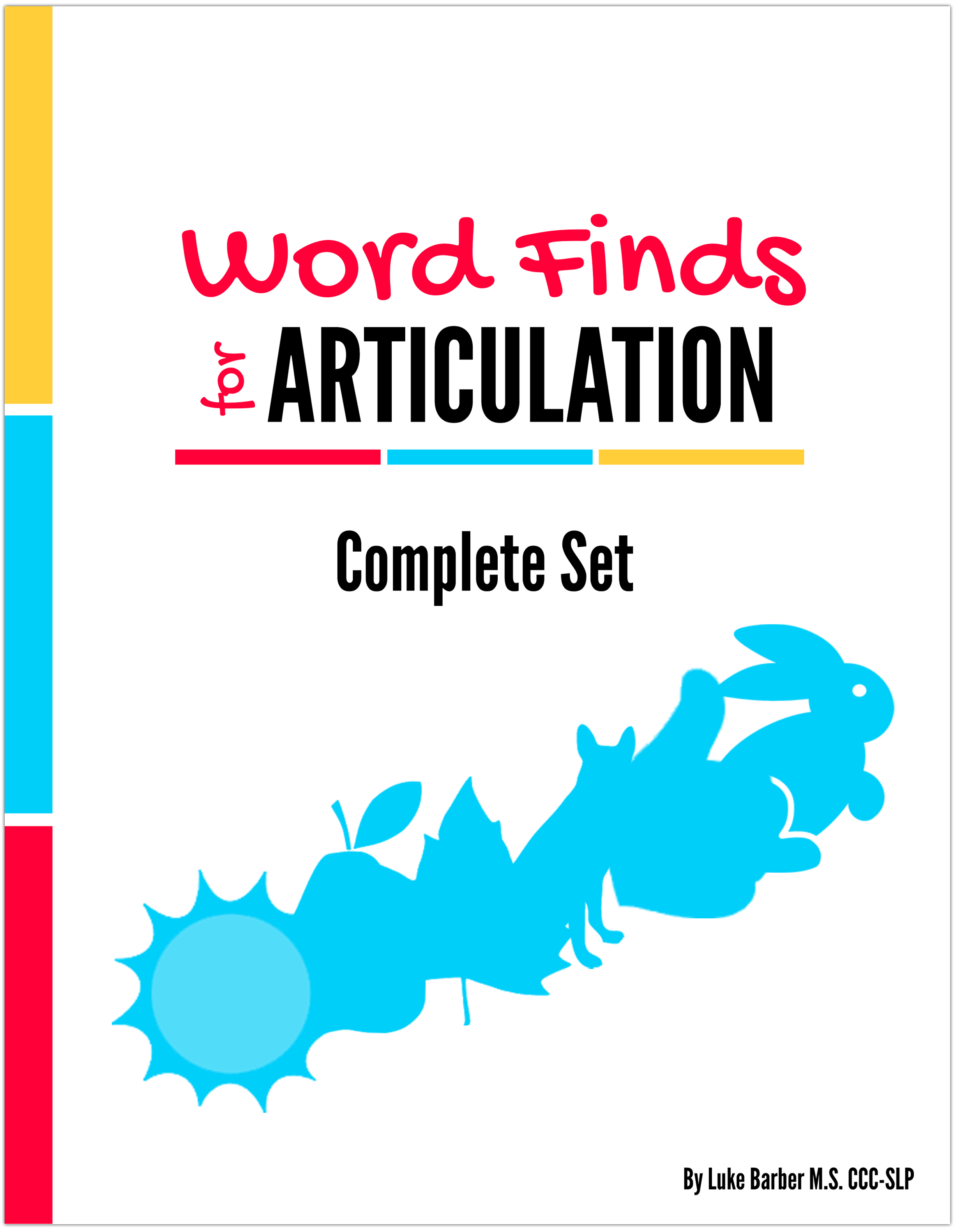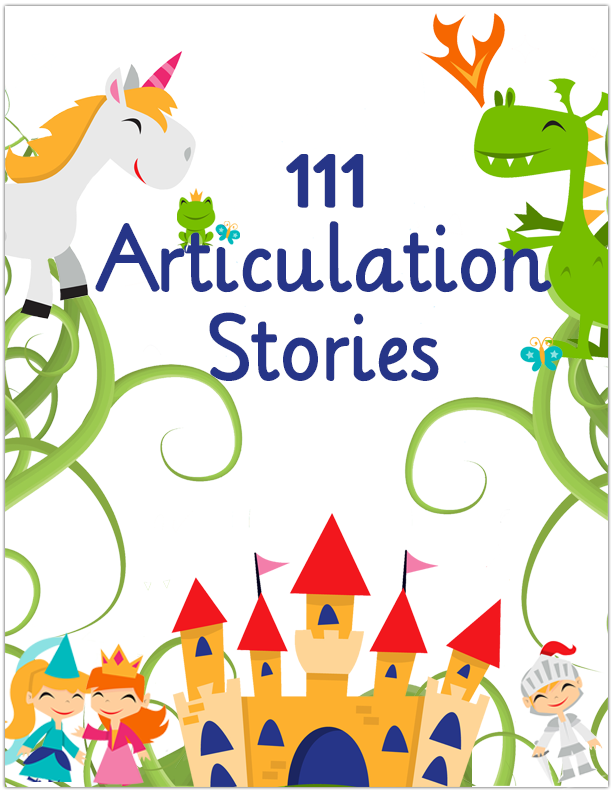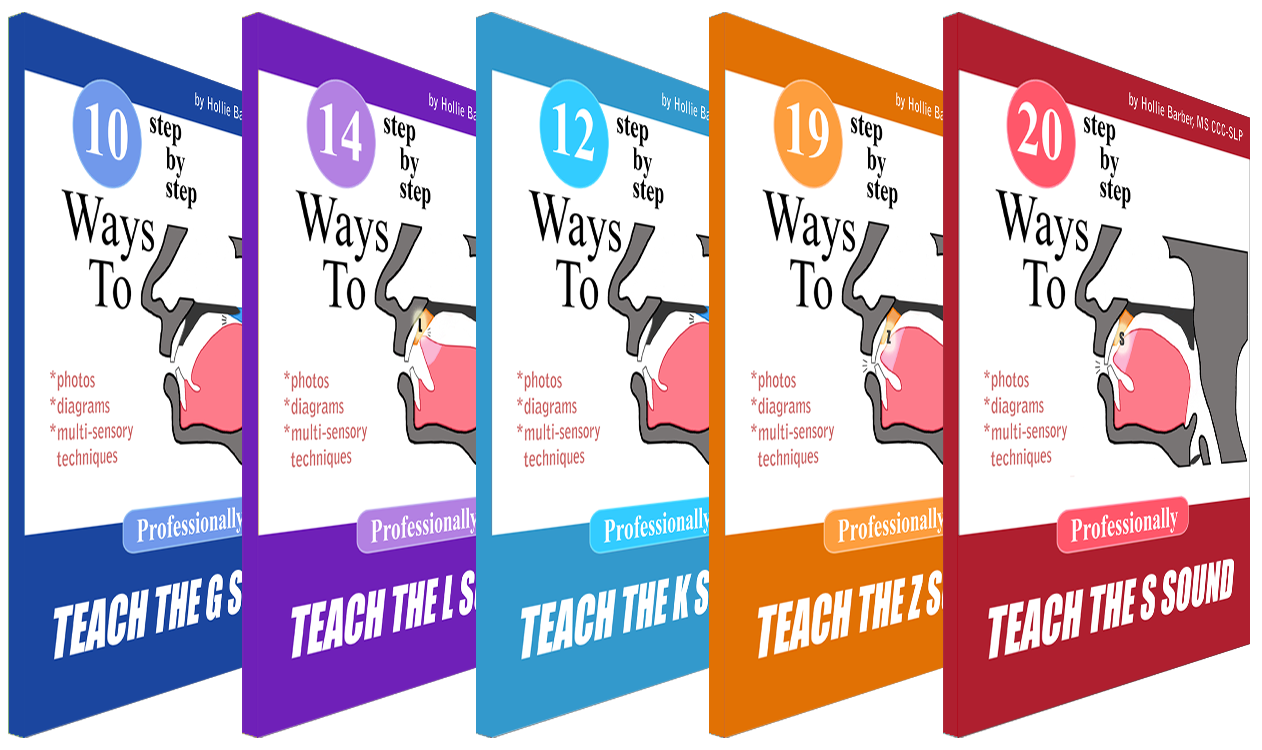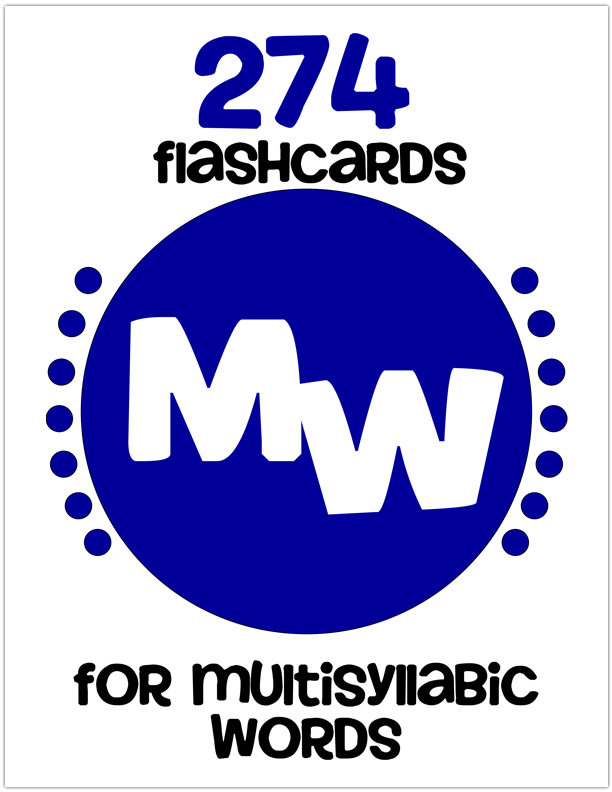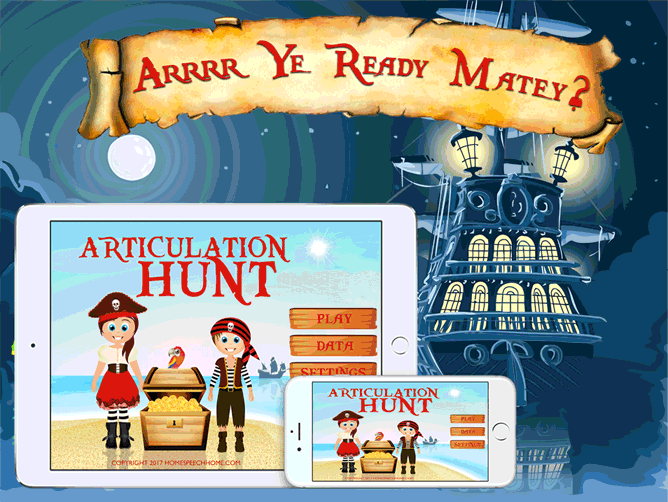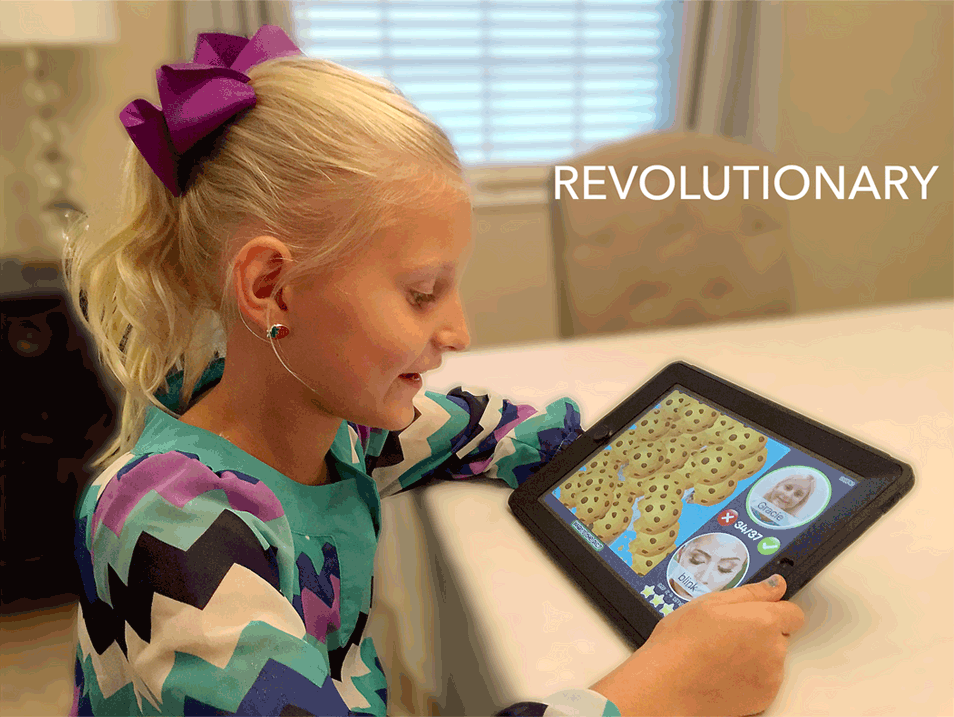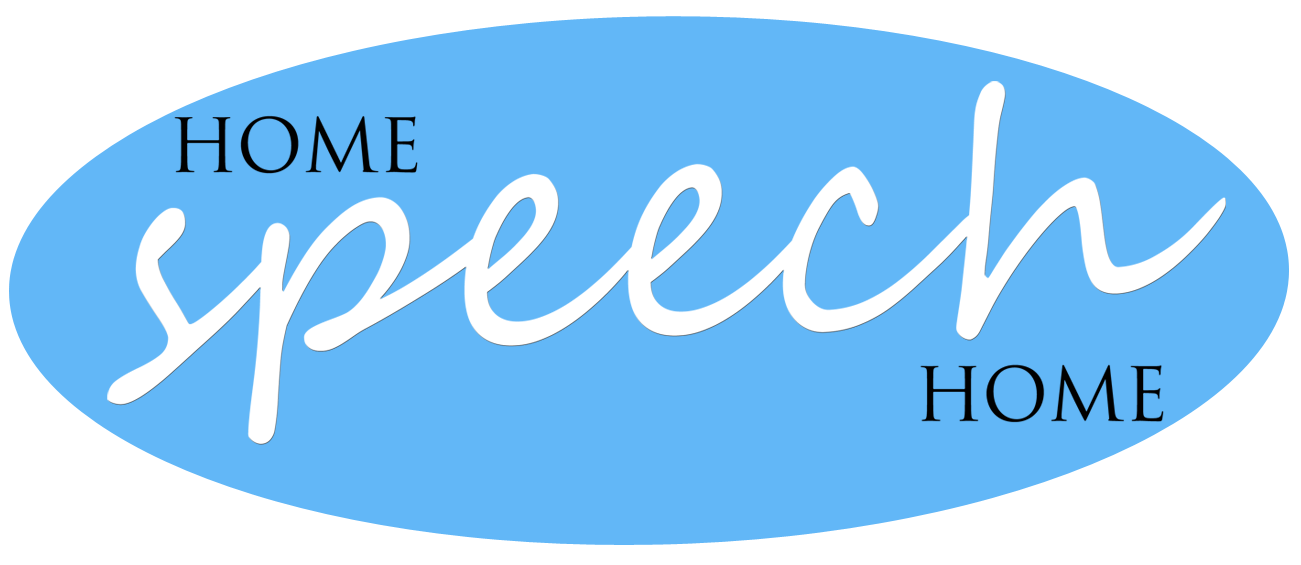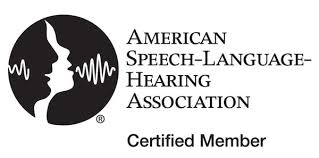Speech Therapy Activities for the L Sound
The /L/ phoneme is pretty common in everyday speech. We hope you enjoy these loveable, loony, lively, laugh-inducing /L/ activities! (Did you know there are hundreds of /L/ adjectives!?)
1. Discrimination
Materials: /L/ and /W/ Words Written or Printed on Paper
The first step when doing speech therapy for /L/ is helping the child to hear and understand the difference between the /L/ sound and whatever they are replacing it with.
In most cases, you will have a child that is replacing /L/ with /W/.
On our website, we have a thousands of minimal pairs listed, which are very helpful when working with discrimination. Print and use the following L/W minimal pairs below:
Light - White
Lake - Wake
Link - Wink
Led - Wed
Late - Wait
Leap - Weep
Life - Wife
Line - Wine
Print each word and cut it out, or use a dry erase/chalk board to write the words next to each other.
With whatever method you chose, place the two minimal pairs in front of the child. Say one of the two words and have the child point to the correct one. Ask them, “Did I use a /W/, or an /L/?”
Keep practicing until the child feels comfortable discriminating between your usage of /L/ and /W/.
Once they can hear the difference, they are more likely to begin to self correct.
Buy Flashcards for L & L Blend Words for $ 9.99
2. Elicitation
Materials: Mirror, Music To “Deck the Halls” (Optional)
Speech therapy for the /L/ phoneme is one of the more easy sounds to elicit because it is very visual.
Bring a mirror into the therapy room and show the child the difference between making the /W/ sound (lips are circled and tongue is relaxed) and the /L/ sound (lips are relaxed and tongue taps the back of the front teeth.)
The child can see the difference of their mouth shape as they practice each sound.
La La La! I love practicing /L/ with singing.
Have the child sing the Christmas song “Deck the Halls” with major emphasis on the “La’s”, or sing the famous Sound of Music song “Do, Ra, Mi, Fa, So, LA, Te Do” And tell them to remember that tongue flip on the La sound. The children will have a lot of fun working on the /L/ sound through music.
3. Lollipop
Materials: Lollipop Picture, /L/ Flashcards, Wifi Access for Lollipop Song
Print the picture of this lollipop.
Have the child look through all their /L/ flashcards and choose their ten favorite words.
Then have the child write each word in the swirls of the lollipop, curling in the words in toward the middle. As they write each word, have them say it ten times (Always elicit maximum productions, even during working time!).
Then send the lollipop home for homework.
Adapt homework depending on the child’s level; they can use each word in a sentence with their parents, or say each word ten times.
Here is a fun game you can play using the lollipop picture.
Print ten lollipops and write a number on the back of nine of them, any number from 5-15.
Write the word “POP!” on the back of one lollipop. Color and laminate them if you wish; they will last longer and you can use them for many other activities and games!
Spread them all out on the table, or put them in a jar so they are standing upright. Have the child chose a lollipop and flip it over. The number on the back is how many flashcards they have to say aloud.
If they chose the lollipop that says “POP!” play this song for a minute and make them get up and dance and sing with it.
(Or if you have limited time, you could do something quick like make a few “popping” sounds by popping their pointer finger in the side of their cheek.
It’s amazing how simple things can be so motivating and fun for kids!)
SEE ALSO: The Best Free App for Speech Therapy
4. Who is the Lemon?
Materials: /L/ Flashcards, An Extra Picture of a Lemon
This game is meant to elicit a lot of productions in a small group of children.
Print a small picture of a lemon.
Have one child leave the room for just a second, and give another child the picture of the lemon to hide in their pocket. Then ask the child who left to come back into the room.
They have to guess who is “the lemon!”
Using the /L/ flashcards or /L/ word list from our website, have the children say ten words each. (If some of the children are working on sounds other than /L/, that is fine too!)
After the ten elicitations, the person who left the room gets to make a guess.
Tell them they must use full sentences when trying to find out who the lemon is.
For example, he/she will say “Jessica, are you the lemon?” If they are wrong, all the kids say ten more words before the next guess.
If the child gets it right, then the person who was the lemon gets to leave the room and it’s time to chose a new “lemon.”
It’s a simple concept but so fun for the kids.
Another way to play this game would be to hide the lemon and have the child/ren look in one spot for every ten accurate productions.
5. Lift the Leaves!
Materials: 10 Leaves, /L/ Flashcards, Permanent Marker
This is a simple game that you can play using real leaves or pictures of leaves printed from your computer.
If you can get your hands on some beautiful large real leaves from outside, that would be optimal. You could also get silk leaves from a local craft store.
Lay 10 leaves out on the table; I like to work in sets of ten because it makes data easier to collect and compute.
Hide a flashcard under each leaf and have the child lift the leaves and say each word ten times. Have them make sentences, such as “I found a ____ under a leaf!”
Another fun activity you can do with real leaves is to take the child outside to collect them and write an /L/ word in permanent marker on each leaf.
You can send them home in a baggie for homework.
When doing activities outside of the therapy room, still utilize every minute with the child.
Have them say words from flashcards or think of silly /L/ sentences as you walk.
Time is so limited, always maximize it!
SEE ALSO: The Best Books for Speech Therapy Practice
6. Lily Pad Leap!
Materials: Lily Pads, /L/ Flashcards
Tell the child/ren that they are frogs and they need to practice their leaping!
If your therapy room is small, move into the hallway for this activity.
Print 5-10 lily pads (on green paper if you have it!) and lay them three feet from each other on the ground.
Have the child crouch down like a frog on the first lily pad and say ten of their target words.
After the ten productions, they get to “LEAP!” to the next lily pad.
You could also write an /L/ word on each lily pad and have them say the word ten times before jumping to the next lily pad.
Therapy materials like this are so easy to adapt for any child; no matter the sound, position, or level they are on.
Leave it more generic if using the materials for many different children, or make it more specific if you have one child in mind, or multiple kids that are on the same level.
Enjoy!

About the Author
Lindsey is an M.S. CCC-SLP from Salt Lake City, UT. She received both her B.S. and M.S. from Utah State University. When she's not chasing her 5 crazy kids around, she enjoys creating engaging speech therapy ideas and materials. Read More
Return to top of Speech Therapy Activities for the L Sound
Activities and Product Discounts, Oh My!
Sign up for Terrific Therapy Emails
Your information is 100% private & never shared.
